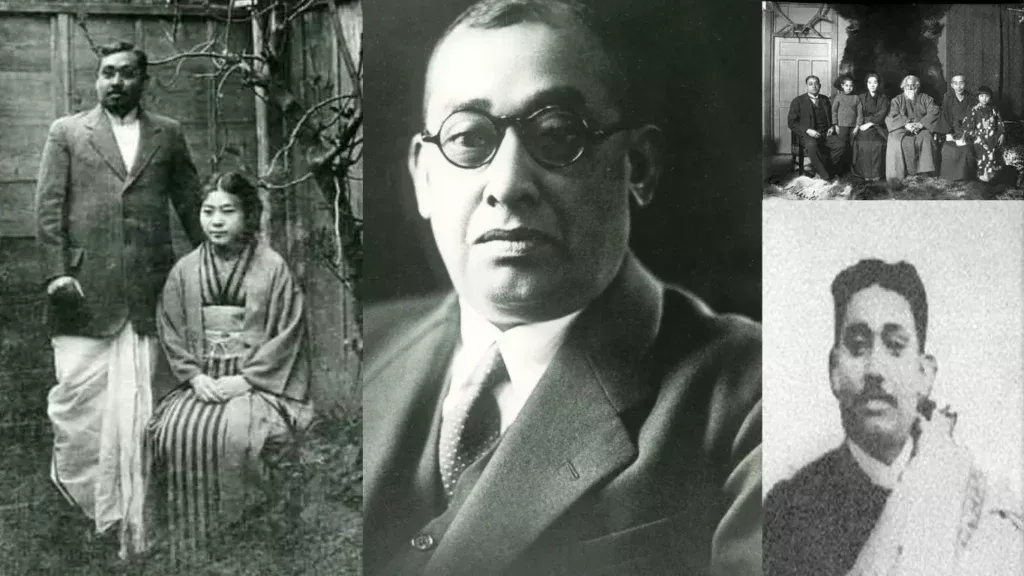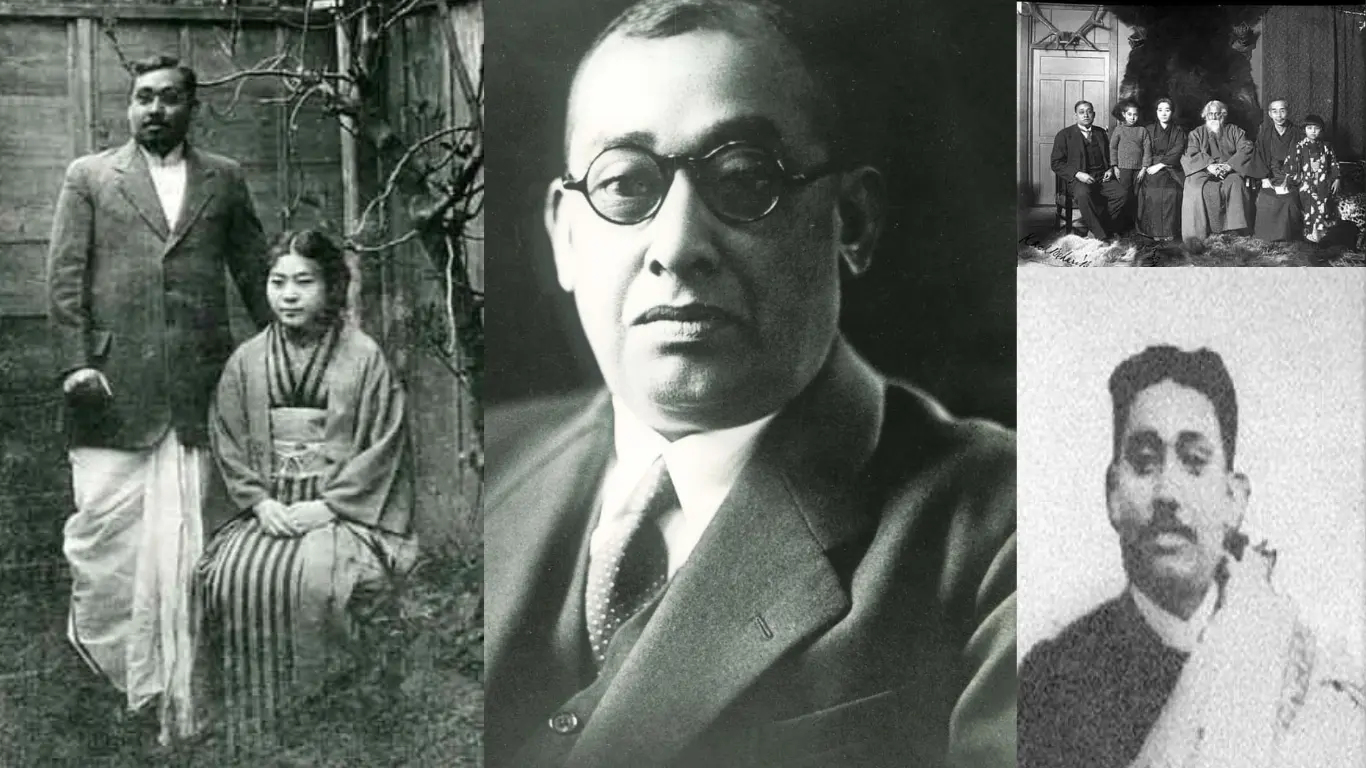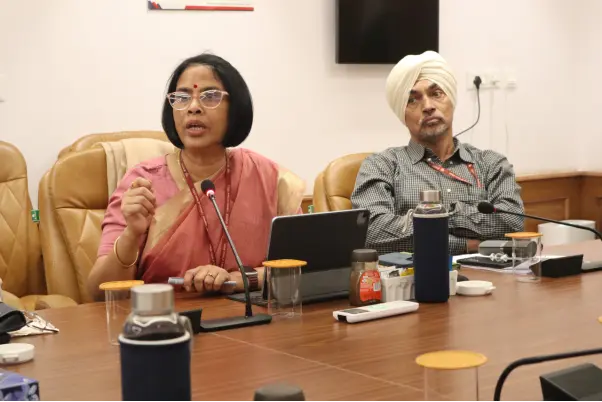
World
The Architect of Indian National Army
 54.5K views
54.5K views
I bow my head to the holy feet of Rash Behari Bose, The Architect of Indian National Army, Father of Armed Revolution in India and obviously the true GURU of Netaji Subhas Chandra Bose on his 78th death Anniversary! am sure about it that
Indian National Army also known as Azad Hind Fauj.
6 months ago
The Indian National Army (INA), also known as Azad Hind Fauj, was a military force formed during World War II to secure India’s independence from British rule in 1942. The INA was closely associated with the charismatic nationalist leader Subhas
 22.7K views
22.7K views
Regulating India’s online gaming industry
Regulating India’s online gaming industry is a complex issue with diverse perspectives.
Explore in-depth information about the Ayodhya Ram Mandir.
Mark your calendars for January 22, 2024, as the Ayodhya Ram Mandir,
India-Maldives Relations, Recent Tensions and Controversy
Maldives’ new President Mohamed Muizu’s famous “India Out” campaign aimed to reduce
About Us
we are a team of journalists and storytellers based in Tripura, India. We believe in the power of stories to ignite change. We report on important issues, share relevant information and conduct investigative journalism – all in an attempt to create a dynamic body of work that will help the larger world see the beauty and challenges of Northeast India and we don’t just cover Northeast India—we dig into the broader economy, society, and culture. Learn More
Breaking News

Explore in-depth information about the Ayodhya Ram Mandir.
Mark your calendars for January 22, 2024, as the Ayodhya Ram Mandir, situated at the historic Ram Janmabhoomi site in Ayodhya, Uttar Pradesh, is all set for its grand inauguration. This splendid

Assam’s unique Swachh Diwali celebration paves way for ‘Waste to Food’
Swachh Diwali celebration paves way for ‘Waste to Food’ Swachh Bharat Mission-Urban under the aegis of Ministry of Housing and Urban Affairs is running the ‘Swachh Diwali, Shubh Diwali’ campaign across the
The Unsolved Mysteries of Literature: 10 Mysterious Books Throughout History
10 Mysterious Books all time Literature has the power to captivate, inspire, and challenge us in
9 months ago
464 views
OPINION
 480.8K views
480.8K views
Con (Fusion) Of Language and Origin
Introduction: It takes courage and conviction to face facts. In science there is something known as “cause and effect “theory. It simply
 464 views
464 views
The Unsolved Mysteries of Literature: 10 Mysterious Books Throughout History
10 Mysterious Books all time Literature has the power to captivate, inspire, and challenge us in countless ways – but there are
Business
 54.5K views
54.5K views
The Architect of Indian National Army
I bow my head to the holy feet of Rash Behari Bose, The Architect of Indian National Army, Father of Armed Revolution in India
 22.7K views
22.7K views
Indian National Army also known as Azad Hind Fauj.
The Indian National Army (INA), also known as Azad Hind Fauj, was a military force formed during World War II to secure India’s independence
22.7K views
 33.1K views
33.1K views
Regulating India’s online gaming industry
Regulating India’s online gaming industry is a complex issue with diverse perspectives. Check here all about the Online Gaming Industry in India. There is
33.1K views
 36.1K views
36.1K views
Explore in-depth information about the Ayodhya Ram Mandir.
Mark your calendars for January 22, 2024, as the Ayodhya Ram Mandir, situated at the historic Ram Janmabhoomi site in Ayodhya, Uttar Pradesh, is
 24.9K views
24.9K views
India-Maldives Relations, Recent Tensions and Controversy
Maldives’ new President Mohamed Muizu’s famous “India Out” campaign aimed to reduce Indian influence in the country. Know all about India-Maldives Relations in this
24.9K views
 508 views
508 views
Ethanol Blending Programmes, Advantages, Issues and Concerns
Ministry of Consumer Affairs, Food & Public Distribution directed all mills/distilleries not to use sugarcane juice for making any ethanol with immediate effect. Get
508 views
Archives
Latest Posts

The Architect of Indian National Army
6 months ago

Indian National Army also known as Azad Hind Fauj.
6 months ago

Regulating India’s online gaming industry
6 months ago

World
 54.5K views
54.5K views
The Architect of Indian National Army
I bow my head to the holy feet of Rash Behari Bose, The Architect of Indian National Army, Father of Armed Revolution in India and obviously the true GURU of Netaji Subhas
6 months ago
54.5K views
 22.7K views
22.7K views
Indian National Army also known as Azad Hind Fauj.
The Indian National Army (INA), also known as Azad Hind Fauj, was a military force formed during World War II to secure India’s independence from British rule in 1942. The INA was
6 months ago
22.7K views
 33.1K views
33.1K views
Regulating India’s online gaming industry
Regulating India’s online gaming industry is a complex issue with diverse perspectives. Check here all about the Online Gaming Industry in India. There is a need for strong regulatory measures in India’s
6 months ago
33.1K views
 36.1K views
36.1K views
Explore in-depth information about the Ayodhya Ram Mandir.
Mark your calendars for January 22, 2024, as the Ayodhya Ram Mandir, situated at the historic Ram Janmabhoomi site in Ayodhya, Uttar Pradesh, is all set for its grand inauguration. This splendid
6 months ago
36.1K views
 24.9K views
24.9K views
India-Maldives Relations, Recent Tensions and Controversy
Maldives’ new President Mohamed Muizu’s famous “India Out” campaign aimed to reduce Indian influence in the country. Know all about India-Maldives Relations in this article More on the News Amid rising tensions,
7 months ago
24.9K views
Videos
Politics

The Architect of Indian National Army
I bow my head to the holy feet of Rash Behari Bose, The Architect of Indian National Army, Father of Armed Revolution in India and obviously the true GURU of Netaji Subhas
6 months ago

India-Maldives Relations, Recent Tensions and Controversy
Maldives’ new President Mohamed Muizu’s famous “India Out” campaign aimed to reduce Indian influence in the country. Know all about India-Maldives Relations in this article More on the News Amid rising tensions,
7 months ago

Nine ministries gather to support MoRD’s
nine ministries gather to support MoRD’s National Campaign against Gender-based Violence – ‘Nayi Chetna – 2.0’ In an inter-ministerial meeting which saw participation of nine line ministries, DAY-NRLM(Deendayal Antyodaya Yojana – National
9 months ago

Assam’s unique Swachh Diwali celebration paves way for ‘Waste to Food’
Swachh Diwali celebration paves way for ‘Waste to Food’ Swachh Bharat Mission-Urban under the aegis of Ministry of Housing and Urban Affairs is running the ‘Swachh Diwali, Shubh Diwali’ campaign across the
9 months ago
opinion
 54.5K views
54.5K views
The Architect of Indian National Army
I bow my head to the holy feet of Rash Behari Bose, The Architect of Indian National Army, Father of Armed Revolution in India and obviously the true GURU of Netaji Subhas
Culture

Explore in-depth information about the Ayodhya Ram Mandir.
Mark your calendars for January 22, 2024, as the Ayodhya Ram Mandir, situated at the historic Ram Janmabhoomi site in Ayodhya, Uttar Pradesh, is
Assam’s unique Swachh Diwali celebration paves way for ‘Waste to Food’
Swachh Diwali celebration paves way for ‘Waste to Food’ Swachh Bharat Mission-Urban under the aegis of Ministry of Housing and Urban Affairs is running
9 months ago



